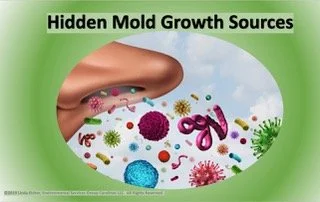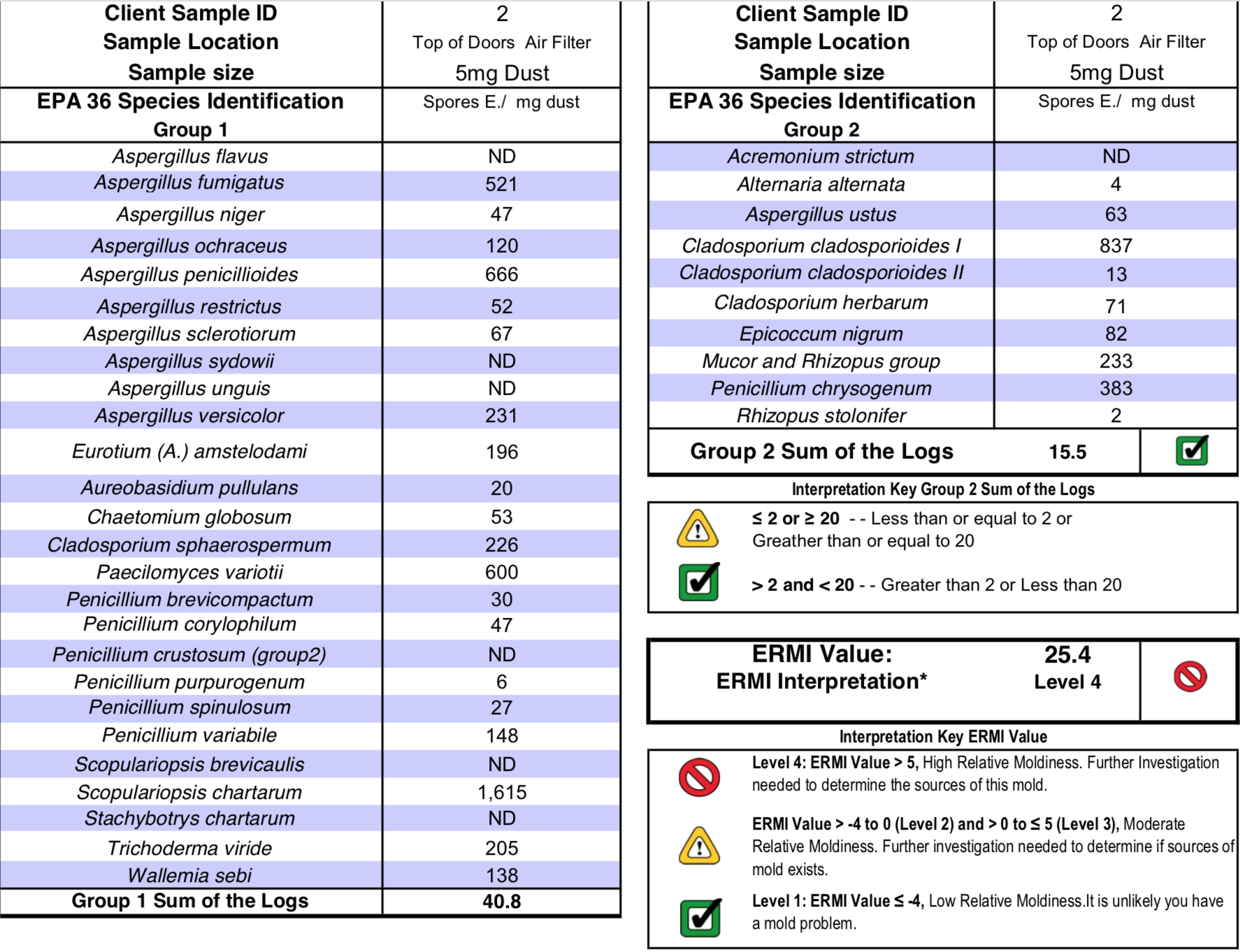Indoor Air Purification - What to Choose?
We live in a toxic world, no surprise! Over the past 50+ years we have increasingly seen the impacts that air-tight, energy efficient buildings have on occupants who are exposed constantly to many of those toxins as they are emitted, produced, or re-circulated throughout their spaces. Your home may be the ONLY place you can control such exposures and it should become a ‘safe haven’ to provide recovery from all those toxins you can’t get away from elsewhere.
When it comes to controlling and reducing indoor environmental toxins and contaminants it is essential to include air purification processes in your plan. While this industry has grown tremendously in recent years, there are many product claims made that can’t be validated, so it’s very confusing to navigate through these choices. Fortunately there are a few stand- out tried and true technologies that outshine in performance and effectiveness. We have personally used these and recommended them to our hundreds of clients over the past 27 years very successfully.
Air purification, no matter the technology, is divided into either ‘PASSIVE’ or ‘ACTIVE’. Think mouse-trap vs prowling cat. A mouse-trap may sit in the corner and can’t do a thing unless the mouse comes to it and is entrapped. That is passive. On the other hand, if you have a cat in the home, it may be prowling, seeking, hunting and finding that mouse where it’s hiding. That’s active.
Likewise, with air purification, passive types would be those that require air to process through them, the most common example being a filter. Contaminants that never get to the filter would not be processed or impacted by the system. Filters are limited in ability to draw air to them. Even a ‘whole-house’ filter will have very limited capacity to collect from dead air pockets, stale air in tight spaces, from around obstacles or from surfaces. In addition, filters can only trap particles down to a designated particle size. Since even nano-sized particles of the exudate of bio-contaminants are prevalent in the indoor environment this is a very real limitation. Many toxic particles can pass right through a filter and recirculate back into the breathing space. So, even though filtration is essential, it can’t be the TOTAL solution.
Some filtration systems also have adsorbent filters, ie charcoal for volatile organic compound capture. These can be helpful in some reduction but we have not found significant changes in pre and post testing for VOC contaminants in many cases.
Another passive type air cleaner is the UV light. These are most often placed in the air handler at the cooling coil area of the AC to help reduce microbial growth. They have a very limited ability to have impacts on bio-contaminants that are not in close vicinity to them and some traveling pollutants can pass by it too quickly in the airflow to have been ‘deactivated’. Many cooling coil assemblies are A shaped or like an upside down V. A single UV light can’t shine on all sides of the coil fins where much of the contamination can occur. This is a serious limitation to consider.
Active types of air purification are those that produce elements that cleanse the air AND surfaces within the supplied environment without dependence on gathering the pollutants to
a central location. These fall into the ionization production (negative ions, bi-polar ions, multi- clustered ions, di-electric barrier ions etc), and PCO-like-types of photo-catalytic oxidation that have more impact on the indoor environment with purification processes that ‘reach out’ into those spaces.
Some of these active purifiers produce ozone as a design, some as a by-product, and some with NO measurable ozone production. UV lightwaves can be utilized that are non-ozone producing and/or a dual wavelength that can both make ozone and destroy ozone instantaneously to produce the photo-catalytic ionization effect, but have no residual measurable ozone in the supplied environment. How these various technological components work together to process out the contaminants in air and on surfaces is a technical subject. There is a great deal of information and credible testing results available to support the efficacy and safety of some of these products, with ongoing studies and new developments continuing.
Ozone often gets a ‘bad rap’ due to the misunderstanding of it’s presence in natural fresh outdoor air. It is a component of outdoor air but only in very low levels is it considered ‘natural’. EPA considers ozone to be ‘fresh air levels’ when it is less than 0.05 parts per million or 5 parts per billion. Anything over that level is considered ozone production or ozone generating. In higher levels ozone can be very irritating, causing respiratory distress. This happens outdoors on highly polluted days where ozone rises with the level of pollution being generated and we get ‘ozone alerts’.
We never recommend using any ozone in indoor occupied spaces unless it is well within fresh outdoor air levels and known to be well-tolerated by any exposed occupants. Over many years of working with our most sensitive clients and various types of air purifiers it is our policy to not use any ozone-producing units in occupied spaces. We do sometimes recommend limited and controlled treatments of unoccupied rooms or contents with ozone when we are able to coach our clients through the process.
Ozone has been in use as a mycotoxin degradation tool in food sources, and there is ample research in the agricultural world for this function. It is effective and does not leave unwanted by-products or changes in the food quality. We have yet to find adequate studies on indoor environmental mycotoxin and other bio-toxin reduction or degradation using ozone.
Speaking of fresh air, how much fresh air is your home getting? Do you open windows? Most people don’t do much of that. Fresh air from outdoors can help dilute indoor air pollutants, especially chemicals. Exchanging some of your stale bad air for fresh outdoor air can really improve the indoor environment. The problem is, how do you keep out the humidity, pollens, allergens, toxins etc? There are ventilation systems that are set up within the HVAC that add a percentage of fresh air into the return to mix with your house air. It may be filtered on the way in, there may be some inline dehumidifier as part of it (in very humid climates) or it may be designed to have the filtration and dehumidification take place as a function of moving through the HVAC handler with a central filter in place.
Your HVAC pro should be well-versed in the various ventilation options and what may be best for your home but you must factor in regular maintenance. The intake ducting will no
doubt become contaminated, the filters will need to be changed, any inline dehumidifiers serviced/cleaned and some type of owner-accessible on/off switch added. You would want to close it off during an outdoor contaminant event such as nearby pesticide or herbicide applications for instance.
An added benefit to ventilation is the easier pathway for ‘new air’ or make up air to come into the home when you are running your clothes dryer, exhaust fans or moving air out of the home. Without a designed source of new air, the make up air may be coming from the crawlspace, attic, wall cavities etc that may bring nasty molds or bacteria with it. A well- designed ventilation system can be adjusted to put a slightly positive pressure in the home so polluted air would tend to push outwards instead of drawing inward.
Take your cues from the fresh air in the outdoor natural environment, away from common pollutants, where you feel like breathing deeply. If you can get anywhere close to that benefit in the indoor environment you may be reversing some of the many drawbacks found in indoor air quality control.
In my opinion, every indoor environment needs filtration, active purification, and often ventilation. Some air purifiers do both filtration and active purification, although they will obviously have some space/coverage limitations. Active air purification targeted contaminants can include molds and mycotoxins, bacterial and other bio-toxins, virus, allergens, chemical pollutants, odors and particle pollution. We, over the years, working with our ultra-sensitive clients, opt for the active purification which does not produce measurable ozone, along with adequate filtration. Client-response has been overwhelmingly positive.
The active purification must have multi-technologies to best enhance effectiveness and broad-based coverage of a supplied area. This includes ionization that is very similar to that generated outdoors in fresh air environments, combining some negative ions in a little higher ratio to positive ions. Dispersing something that produces ions is challenging because an ion neutralizes its charge when it hits an obstruction or surface. Most ion-producing equipment installed in an HVAC doesn’t change the ion levels in the airspace of the home in any significantly measurable way because it is neutralized within the ducting. For that reason I have been very selective in using ones that have proven ionization that does affect the supplied air. This is essential in enabling the ‘precipitation’ or settling-out of the tiny micro- sized particles from the air that normally hang out in the breathing zone for hours to days. Clustering the tiny non-settling particles to create larger sizes that settle more quickly from the breathing zones is important. The larger sized particles also have a greater chance of being carried to a filter for efficient capture.
Secondly, as noted above, while I see some advantages to small amounts of ozone used for air cleaning or special room/content cleaning, it often is misunderstood or is an element that some of our very environmentally sensitive clients can’t tolerate. So my second criteria is to have a no-ozone option but still have enhanced air purification. Some of our favored products can do both, treat without ozone or do special timed treatments in closed rooms with some ozone production, but these are only free-standing units, not HVAC installed.
Thirdly, in order to have the best production of the purification molecules that are combinations of hydrogen and oxygen a high quality quad-metallic (4 noble metals) target material is needed with a particular wavelength of light that creates them as it shines on the target. These molecules then enter the airspace and have an effect on airborne and surface contaminants.
Of course, we can’t say enough about having a well-executed on-site assessment of your home performed prior to providing a ‘solution plan’ for creating a healthier indoor environment. Moisture or humidity issues, mold/bacterial growth sources, high VOC emissions, high house-hold chemical use, toxic mattresses or other reservoirs of bio- contaminants etc all need to be addressed at the source first. Air purification, in my opinion, is a tool for maintaining and enhancing good air quality but should not be used as a fix-all or band-aid.
We prefer to consult our clients on what may be best for their particular situation and help them get the best pricing for their chosen products. Check with us for our latest recommendations. Tell us your story. We’d love to be a part of your journey to achieving a healthier living environment.
Linda Eicher, Cornelius NC
Co-owner, Environmental Services Group Carolinas ESGCarolinas.com
Linda@esgcarolinas.com















